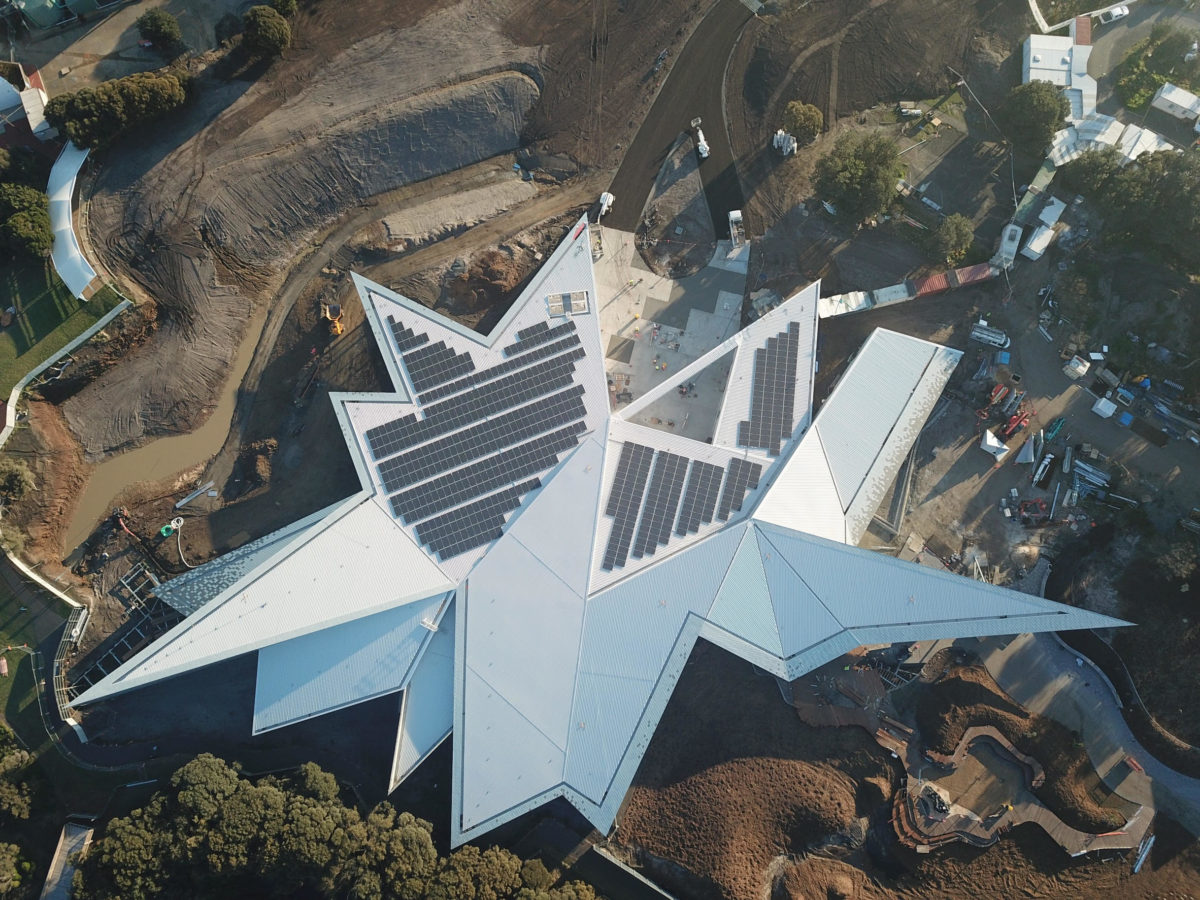One of the biggest tourist attractions in Australia, Phillip Island Nature Parks has built a new visitor centre perched on a hill with sweeping views of the beach and coastline. The new $58.2 million facility, which has already won international architectural awards, is powered by solar energy, in keeping with Phillip Island’s goal of being carbon neutral by 2030.
Gippsland Solar, which was responsible for the centre’s solar system, used 666 Trina Solar TSM DD05A.08 (II) Honey M Plus 315 mono perc modules for the 200 kW rooftop installation, coupled with Fronius inverters. The installer faced several challenges with this project.
According to Gippsland Solar founder and managing director, Andy McCarthy, strong winds and a lot of salt spray were among those challenges with the centre built on a hilltop overlooking the sea. The installer said it has chosen the Honey M Plus 315 module because it is certified to withstand challenging environmental conditions, as well as because it works well with the inverters and mounting system they had selected.
“Rather than use all the rooftop area, Phillip Island Nature Parks only wanted to use part of the rooftop and leave some roof-space free,” McCarthy said, adding Gippsland Solar, therefore, needed the higher efficiency, that comes with mono perc, to make the most of the limited roof space available. “Gippsland Solar has a five-year operations and maintenance contract to help see that the system keeps performing to expectation in this challenging environment,” he said.
The solar installation is the latest among Gippsland’s works on Phillip Island, including a 243 kW solar array at Newhaven College and a 100kW system at the Nobbies Centre. According to McCarthy, since it was installed, the system has been performing well and as expected, generating 370kWh even on a cloudy winter day.
Finally, the building’s architects are also happy because the rooftop installation is in keeping with the facility’s aesthetics. The zinc-clad star-shaped centre, officially opened last week by Premier Daniel Andrews and Minister for Environment, Energy and Climate Change Lily D’Ambrosio, is a 2019 award winner in the International Architecture Awards organised by the Chicago Athenaeum Museum of Architecture and Design and the European Centre for Architecture Art Design and Urban Studies.
Phillip Island Nature Parks has a dual role – it must manage the thousands of visitors that come each day to see the feathered locals, smallest of all penguin species, standing around 33cm tall and weighing around one kilogram, whilst also protect their habitat. So, sustainability is key. On the opening day, Minister D’Ambrosio announced all single-use plastics throughout the facility’s food outlets will be eliminated in yet another aspect of the visitor center’s redevelopment.
This content is protected by copyright and may not be reused. If you want to cooperate with us and would like to reuse some of our content, please contact: editors@pv-magazine.com.









2 comments
By submitting this form you agree to pv magazine using your data for the purposes of publishing your comment.
Your personal data will only be disclosed or otherwise transmitted to third parties for the purposes of spam filtering or if this is necessary for technical maintenance of the website. Any other transfer to third parties will not take place unless this is justified on the basis of applicable data protection regulations or if pv magazine is legally obliged to do so.
You may revoke this consent at any time with effect for the future, in which case your personal data will be deleted immediately. Otherwise, your data will be deleted if pv magazine has processed your request or the purpose of data storage is fulfilled.
Further information on data privacy can be found in our Data Protection Policy.